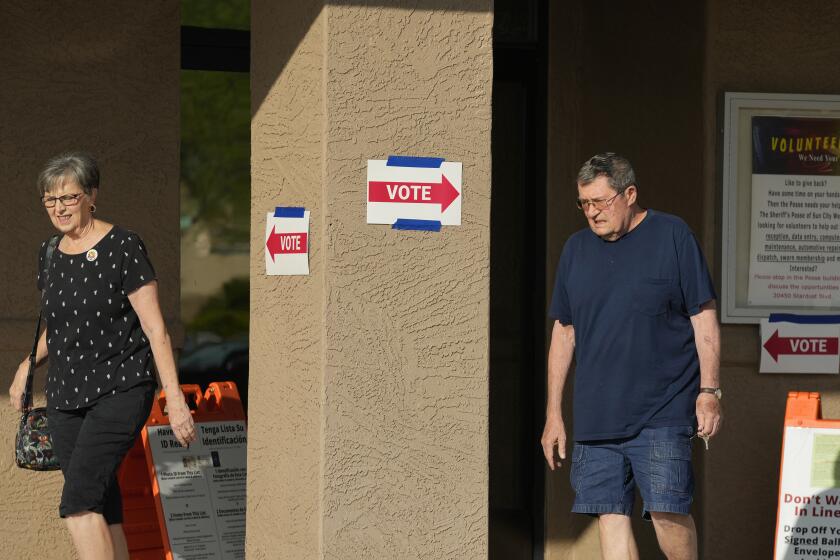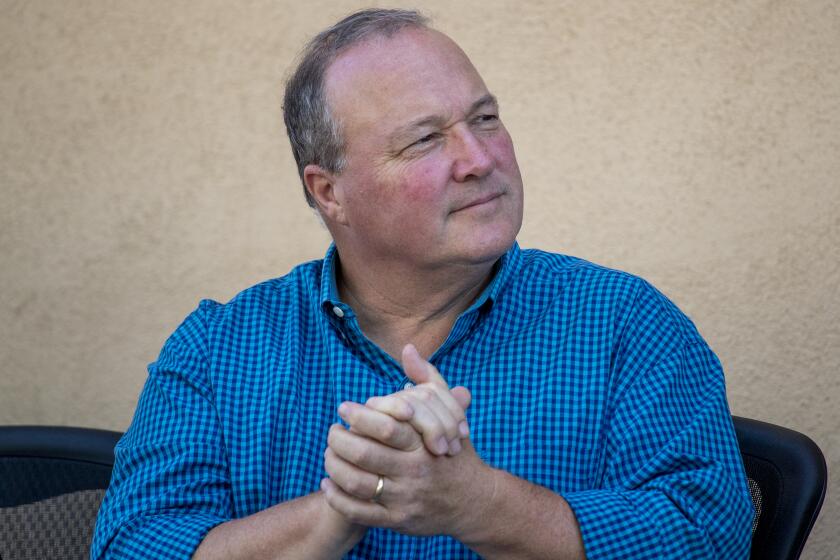Aircraft emission cuts urged
Charging the Bush administration with a “gross dereliction of duty,” California Atty. Gen. Jerry Brown said he would petition the Environmental Protection Agency today to crack down on rising aircraft emissions that contribute to global warming.
“This is a battering ram,” said Brown, who is joined in his petition by four states, New York City, the District of Columbia and Southern California air pollution officials. “Climate change is the most important environmental issue facing the U.S. and the world. We have to keep pounding on the White House door until they finally wake up.”
The petition comes as diplomats gather in Bali to revive international negotiations on climate change, and it opens a new front in the battle to ratchet down the emission of carbon dioxide and other heat-trapping gases. The 1997 Kyoto Protocol did not directly cover aviation, and the U.S., which is responsible for almost half of global aircraft exhaust, has fought efforts to cap emissions under the International Civil Aviation Organization, a United Nations body.
Aviation accounts for about 2% of worldwide carbon dioxide emissions. But jet-fuel exhaust, unlike the tailpipe pollution of cars and trucks, occurs miles above the Earth’s surface in the delicate stratosphere, where it creates swaths of icy condensation, boosts ozone levels and magnifies the heat-trapping effect.
Pressure is mounting on governments worldwide to enact new rules. But the airline industry, battered by bankruptcies, terrorist threats and anger over flight delays and crowding, sees regulation as unnecessary.
The Air Transport Assn., a trade group for U.S. airlines, says carriers have doubled their fuel efficiency since 1978. And the companies say they are already adopting the sorts of measures the EPA might require, such as investing in lighter aircraft, winglets to reduce drag and cutting-edge software to direct routes. They are embracing more gradual landing approaches and reducing idling, they say.
“We are not afraid for EPA to look at this question,” said Nancy Young, the Air Transport Assn.’s vice president of environmental affairs. Young noted that the aviation industry “drives 8% of the world economy” but is projected to account for only 5% of global emissions by 2050. “That’s good bang for the buck,” she said.
Still, in the U.S. as well as in such developing nations as China and India, air travel is booming, recovering from a lull after the Sept. 11, 2001, terrorist attacks and subsequent plots. Over the next half-century, aircraft emissions are expected to triple, according to the U.N.’s International Panel on Climate Change.
That makes aviation a particular concern, because global carbon dioxide pollution must be slashed by at least 80% by mid-century, according to scientific consensus, if the worst effects of climate change -- including rising sea levels, catastrophic wildfires, floods, spreading deserts, water shortages and species extinction -- are to be avoided.
Earthjustice, an Oakland-based legal group, was to file a similar petition today on behalf of three national environmental groups: Oceana, Friends of the Earth and the Center for Biological Diversity.
“There is an unrelenting global demand for increased air transport of both passengers and goods,” said Alice Thomas, an Earthjustice attorney, noting that the U.S. and China recently signed an agreement to double passenger flights by 2012.
In Europe, the push for restrictions is even stronger. In August, 1,200 protesters tried to block an expansion of London’s Heathrow Airport on the grounds that it would exacerbate global warming. And, last month, the European Parliament voted to bring aviation into its emission-trading system, requiring all airlines flying within or into Europe, including U.S. carriers, to cut their greenhouse gas emissions by 10% or buy pollution credits from other companies. The measure is expected to be approved by EU governments early next year, and would take effect in 2011.
In the U.S., emissions from domestic flights have grown by 15% since 1990, while passenger miles have increased more than fourfold over the same period. Of particular concern is the rapid expansion of corporate and private jet travel.
“The math is simple,” Air Transport Assn. President James May testified before Congress this year. “Carrying 250 people and cargo across the country in a single plane burns a lot less fuel than over 30 separate corporate jets, each flying six people.”
In September, the association pledged to improve fuel economy an additional 30% over the next 18 years. It is also lobbying Congress for a satellite-based air traffic control system, which, it estimates, would save as much as 15% in fuel.
The petitions to spur federal rules for airline emissions follow efforts, led by California, to force car and truck manufacturers to slash the tailpipe emissions of carbon dioxide. The state has sued the EPA to allow it to enact its own tailpipe rules. And in October, Brown filed a petition, along with environmental groups, asking the EPA to crack down on greenhouse gas emissions from oceangoing vessels.
Joining Brown’s aviation petition were Connecticut, New Jersey, New Mexico and Pennsylvania. The South Coast Air Quality Management District -- the smog control agency for Los Angeles, Orange, Riverside and San Bernardino counties -- also signed on.
There is no specific deadline for the EPA to respond to the petition.
EPA spokeswoman Margot Perez-Sullivan declined to address the issue of aircraft regulation.
However, she noted that various voluntary programs last year “prevented an estimated 100 million metric tons of greenhouse gas emissions, equivalent to the annual emissions from more than 60 million vehicles.”
--
More to Read
Get the L.A. Times Politics newsletter
Deeply reported insights into legislation, politics and policy from Sacramento, Washington and beyond. In your inbox three times per week.
You may occasionally receive promotional content from the Los Angeles Times.











